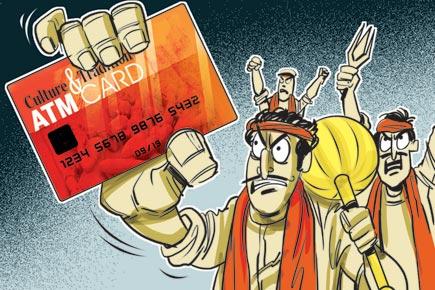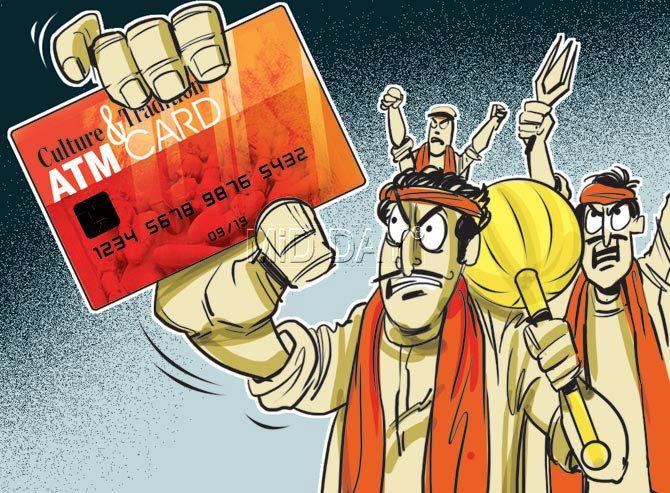The Bajrang Sene, an activist group in Madhya Pradesh, is upset about something. It’s not entirely clear what

 Illustration/Ravi Jadhav
Illustration/Ravi Jadhav
The Bajrang Sene, an activist group in Madhya Pradesh, is upset about something. It's not entirely clear what. They wish to ban the sale of 'obscene' books and figures at the tourist canteen near Khajuraho as it tarnishes India in the eyes of tourists. Frankly, the athletically complex sexual moves indicated in some traditional manuals might terrorise most of us into inadequacy, but otherwise they are more likely to impress than tarnish.
ADVERTISEMENT
Their additional objection is that such images are against that elusive thing called "Indian tradition." As for the explicit sculptures of Khajuraho, they said that that was a different matter as those had been made long ago and, "Whatever has been depicted can't be allowed to happen here now." That is a little confusing because, most of us regular folks, yaniki not extra padhe-likhe ones, understand tradition as something that has been going on for a long time. Hence, we can only conclude from this that, well, tradition is against tradition.
Tradition, like English, is a very phunny language because it means different things to different people. It is tempting to dismiss the Bajrang Sene as crazies or, more kindly, foolish. More pertinently, since their confusion indicates a low stake in the overt issues, what is prompting their considerable efforts?
To a great extent it is a matter of currency, a quicksilver thing, like tradition. We use the word for money, implying a certain stability and, most of all, unity. Money is a lingua franca of value that cuts across all barriers.
Nevertheless, though almost everyone uses money in the world, different countries use different currencies. There is a sense then that currency is other than just money -it is a value, of the economy but also the culture of a place. That's why we debate so much on whom or what to put on currency notes.
These values or currencies exist in numerous ways in any society -sometimes giving an extra, masked value to money you already have, yaniki cultural capital; sometimes leading you to the money you don't have. New and old currencies are constantly arising and competing with each other in the social bazaar of the world, their value dependent on the sphere of circulation.
For instance, once having a degree was a currency - BA, MBA, BTech, MBBS - and escalating. Speaking good English is a currency. Good looks have always been a currency. Fair skin, size zero bodies and six packs are a currency. Heteronormative coupledom is a currency. Knowing how to skirt bureaucratic systems is a currency. Social media numbers are, of course, a currency Being a reality TV star is a currency. So, these are all things people try to acquire in the hope of acquiring value in a society, to mixed results, as, the more currencies you have, the greater your success - just one sometimes is not enough.
To seek to stop others from speaking, eating, enjoying themselves, by asserting yourself the true holder of tradition, is an increasingly powerful currency in the present moment. The Bajrang Sene's is an effort, however clumsy, to acquire some of this currency. Even their name - a sandhi of Bajrang Dal and Ram Sene - mirrors the way 'Disco' was once appended to everything including papayas as a trademark of modern excellence. This is a new tradition-al currency, an imagined membership fee for visibility.
Paromita Vohra is an award-winning Mumbai-based filmmaker, writer and curator working with fiction and non-fiction. Reach her at www.parodevipictures.com
 Subscribe today by clicking the link and stay updated with the latest news!" Click here!
Subscribe today by clicking the link and stay updated with the latest news!" Click here!







